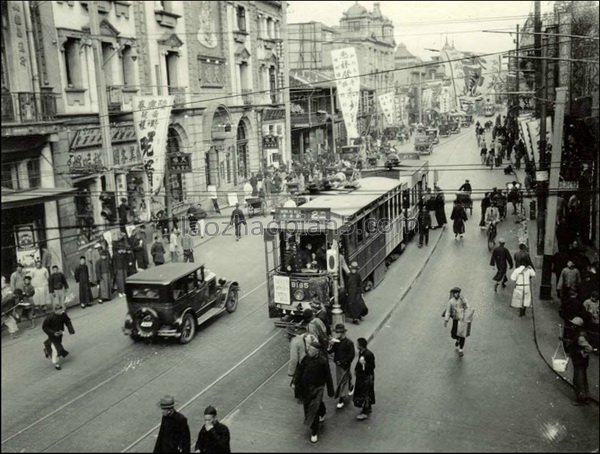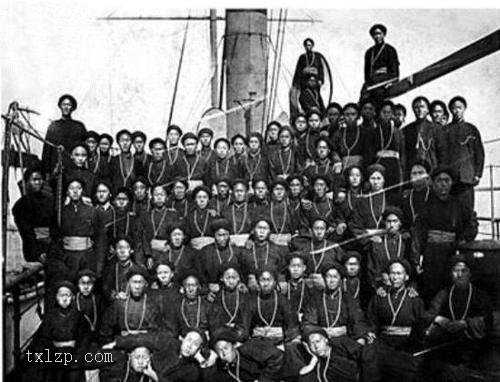Share a group of old photos of Jiamusi, Heilongjiang, in 1937, to see the historical features of Qianzhen Township, a Japanese immigrant village 80 years ago in the Republic of China
This group of photos is from the Japanese magazineThe 154th issue of Yadong Prints.
The issue date of the magazine in which this group of photos was published was May 1937, so this group of photos was taken before May 1937.
The following is a preview of this group of photos:
![图片[1]-The old photo of Jiamusi in 1937 shows the style and features of Qianzhen Township, a Japanese immigrant village at that time-China Archive](https://chinaarchive.net/photo/republic-of-china/1-220513230931.jpg)
1936年5月,日本关东军制定了所谓的“满洲农业移民”百万户移住计划,规定以20年间移民100万户、500万人为目标。大批日本农业贫民源源不断地涌入中国东北,成为日本开拓团。
![图片[2]-The old photo of Jiamusi in 1937 shows the style and features of Qianzhen Township, a Japanese immigrant village at that time-China Archive](https://chinaarchive.net/photo/republic-of-china/1-220513230934.jpg)
1933年7月,日本第二次武装移民到依兰县的湖南营(今桦南县桦南镇),建立了名为“千振乡”的移民点、将湖南营改名为千振乡。
![图片[3]-The old photo of Jiamusi in 1937 shows the style and features of Qianzhen Township, a Japanese immigrant village at that time-China Archive](https://chinaarchive.net/photo/republic-of-china/1-220513230937.jpg)
日本开拓团占领湖南营地区之后强行低价收购当地农民的土地、房屋,迫使当地居民流离失所无家可归,日本开拓团占领的土地都是当地农民祖祖辈辈早已开垦好的土地。
![图片[4]-The old photo of Jiamusi in 1937 shows the style and features of Qianzhen Township, a Japanese immigrant village at that time-China Archive](https://chinaarchive.net/photo/republic-of-china/1-220513230939.jpg)
没有了土地的农民被赶到了一个被日本人称为人圈的地方,那里的环境特别差疾病泛滥,不少农民都感染疾病或者被饿死。年轻的男性都被抓去充当劳力、苦工,年轻的女性被抓去充当日本军人的慰安妇、舞妓。
![图片[5]-The old photo of Jiamusi in 1937 shows the style and features of Qianzhen Township, a Japanese immigrant village at that time-China Archive](https://chinaarchive.net/photo/republic-of-china/1-220513230941.jpg)
日本军人对反抗侵略的农民施行三光政策,烧光、杀光、抢光,反抗的农民被杀死,房屋被烧毁。日本帝国主义的这一系列恶劣的行为激起了当地农民的反抗,其中较为著名的有谢文东带领的土龙山农民暴动、祁致中领导的驼腰子金矿工人暴动等,为了镇压民众的反抗,日本军人大量屠杀当地居民,失去土地的湖南营农民退守至七星峰一带为根据地展开了抗日战斗的历程。
![图片[6]-The old photo of Jiamusi in 1937 shows the style and features of Qianzhen Township, a Japanese immigrant village at that time-China Archive](https://chinaarchive.net/photo/republic-of-china/1-220513230944.jpg)
日本开拓团在千振乡建立了神社、服装厂、学堂等。
![图片[7]-The old photo of Jiamusi in 1937 shows the style and features of Qianzhen Township, a Japanese immigrant village at that time-China Archive](https://chinaarchive.net/photo/republic-of-china/1-220513230946.jpg)
次年在千振(原湖南营)修建飞机场,日本将千振大量物资、蔬菜、水果、粮食等通过飞机运输至前沿阵地,将千振附近的长龙山改称为东宫山,并在东宫山为日本牺牲的军人修建陵墓。
![图片[8]-The old photo of Jiamusi in 1937 shows the style and features of Qianzhen Township, a Japanese immigrant village at that time-China Archive](https://chinaarchive.net/photo/republic-of-china/1-220513230949.jpg)
日本开拓团移民到千振之后,强迫当地居民学日语、拜神社、穿和服、学日本文化等,奴化当地居民,迫使当地居民日本化,达到永久占领千振的目的。
![图片[9]-The old photo of Jiamusi in 1937 shows the style and features of Qianzhen Township, a Japanese immigrant village at that time-China Archive](https://chinaarchive.net/photo/republic-of-china/1-220513230951.jpg)
1945年,抗日战争胜利后,居住在千振的日本居民基本被送回日本,在原千振地区设立千振区,1946年,废除千振区恢复湖南营镇。
![图片[10]-The old photo of Jiamusi in 1937 shows the style and features of Qianzhen Township, a Japanese immigrant village at that time-China Archive](https://chinaarchive.net/photo/republic-of-china/1-220513230954.jpg)
1946年6月,合江省政府决定将桦川县南部的湖南营、孟家岗等地区划出,设置桦南县。1985年1月,撤销合江地区,划归佳木斯领导。



![[Qing Dynasty] British female painter—Elizabeth Keith, using woodblock prints to record China from the late Qing Dynasty to the early Republic of China—1915-China Archive](https://chinaarchive.net/wp-content/uploads/2022/11/image-191x300.png)

